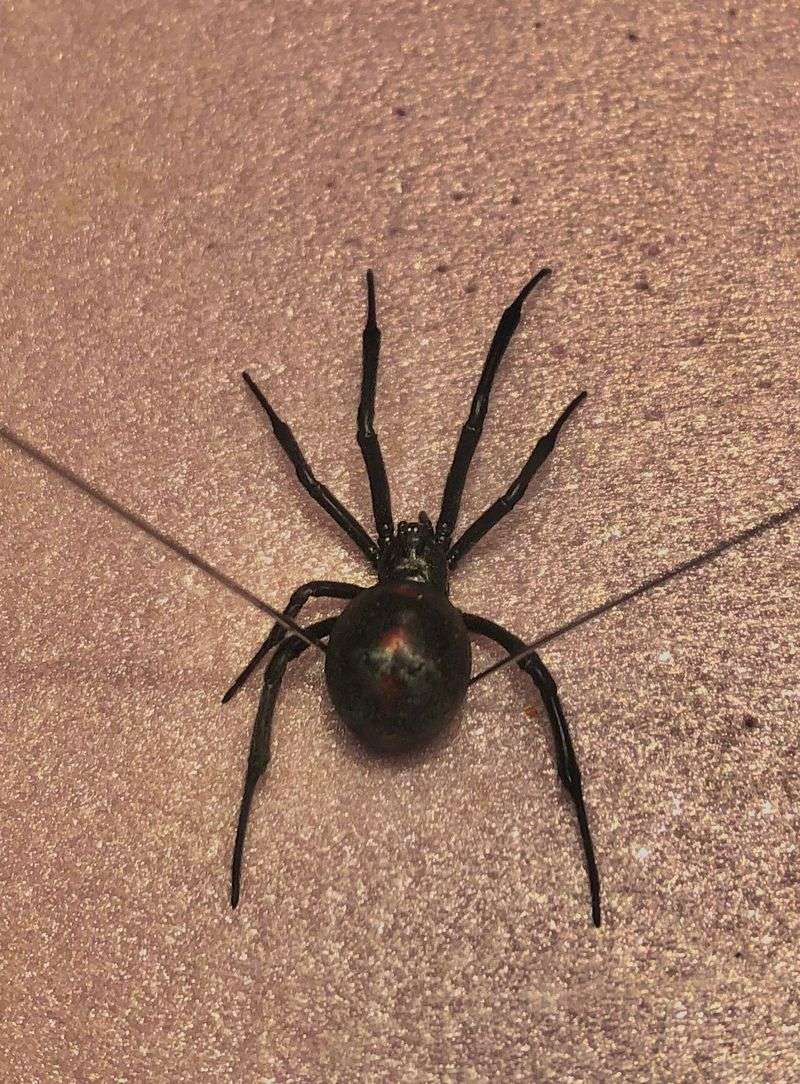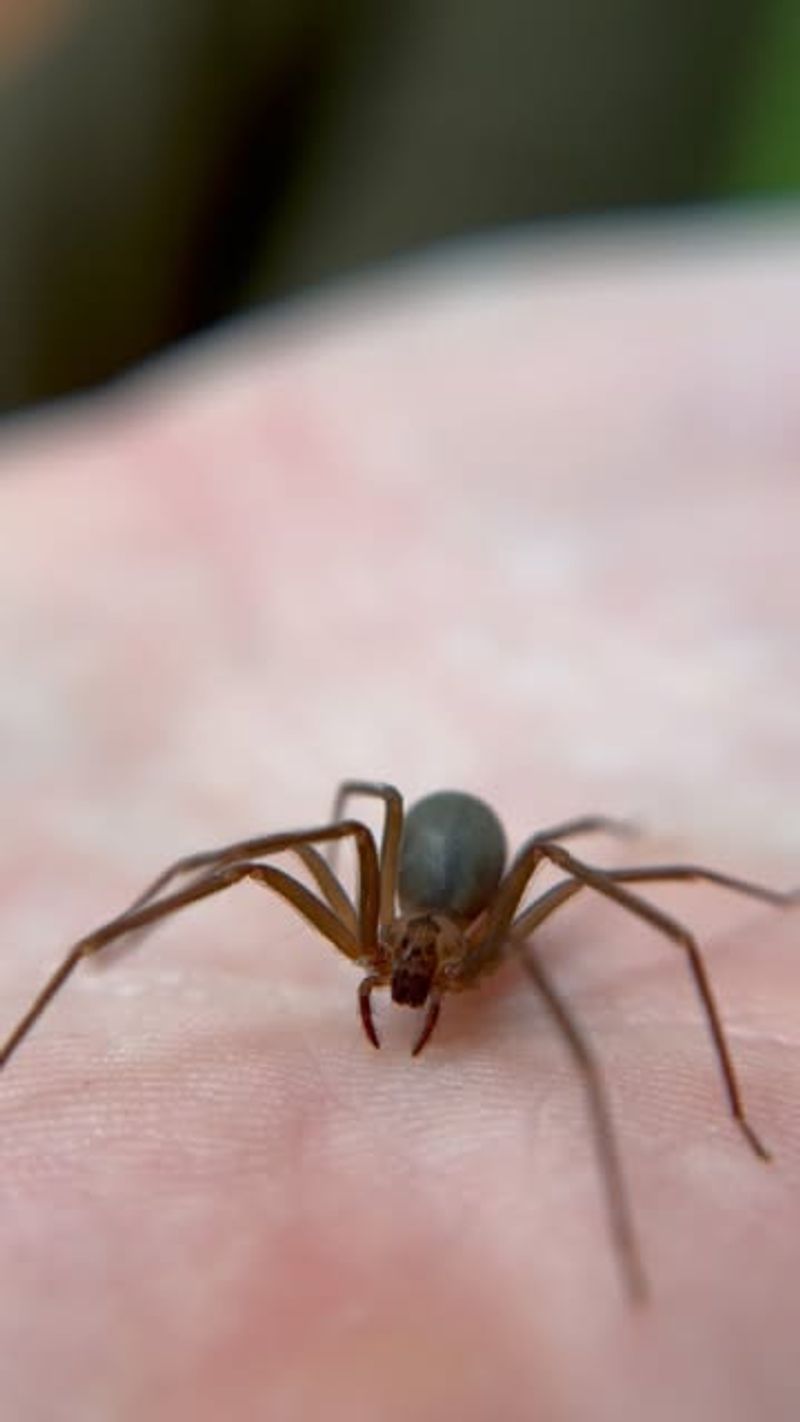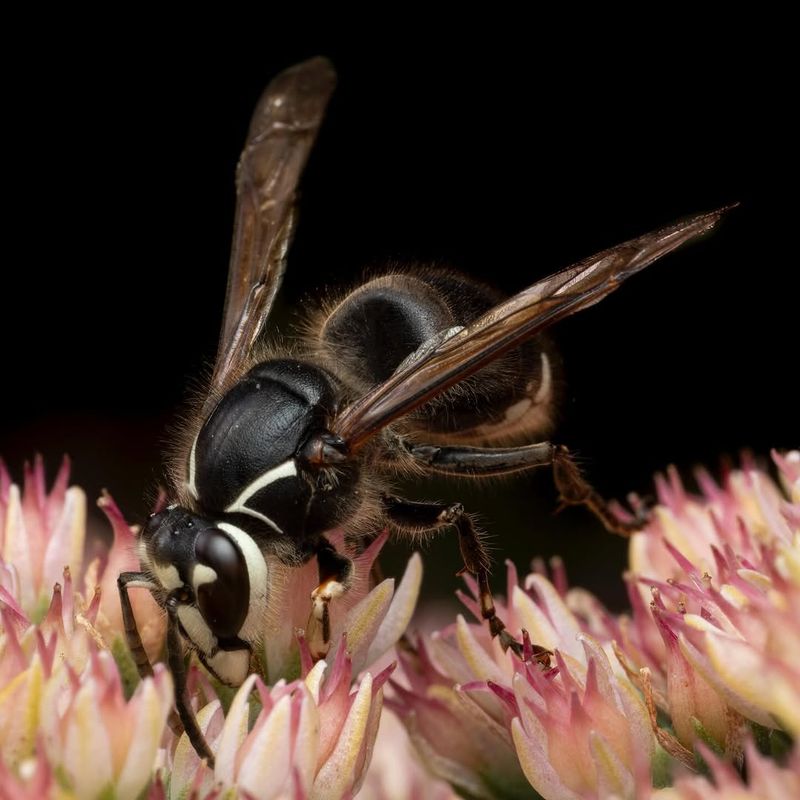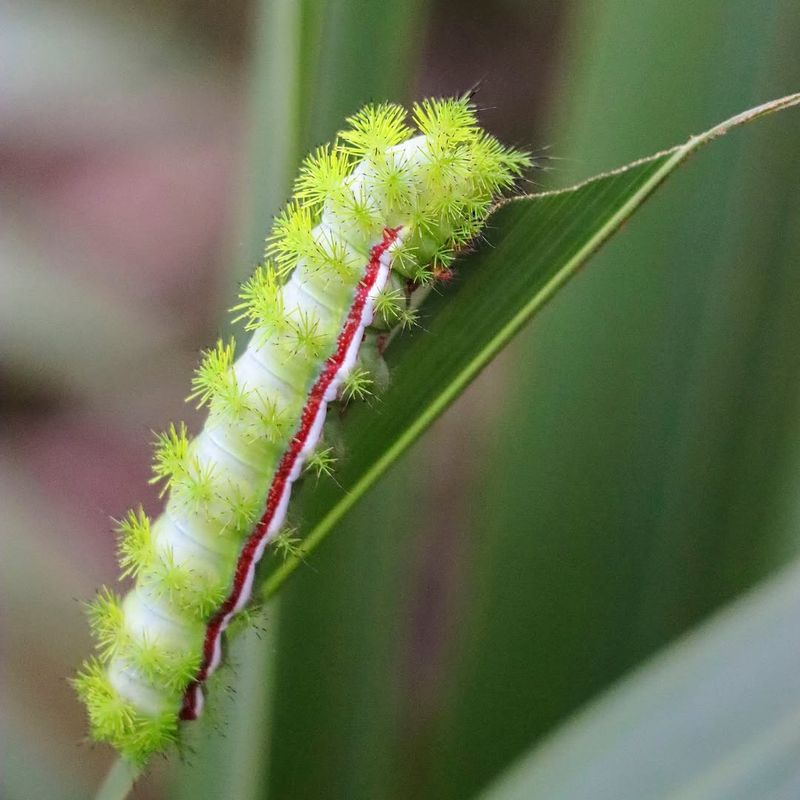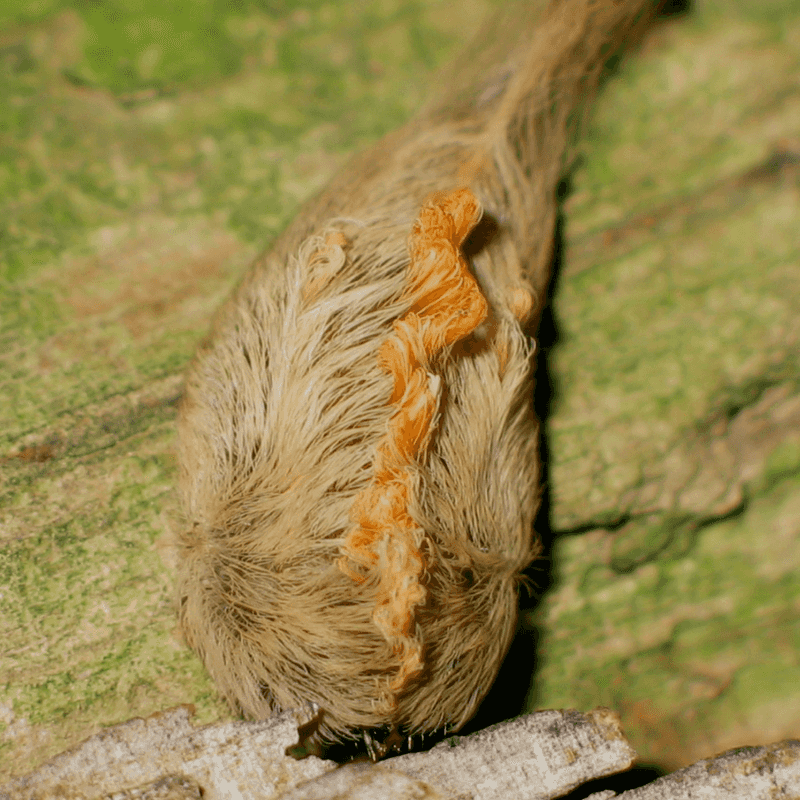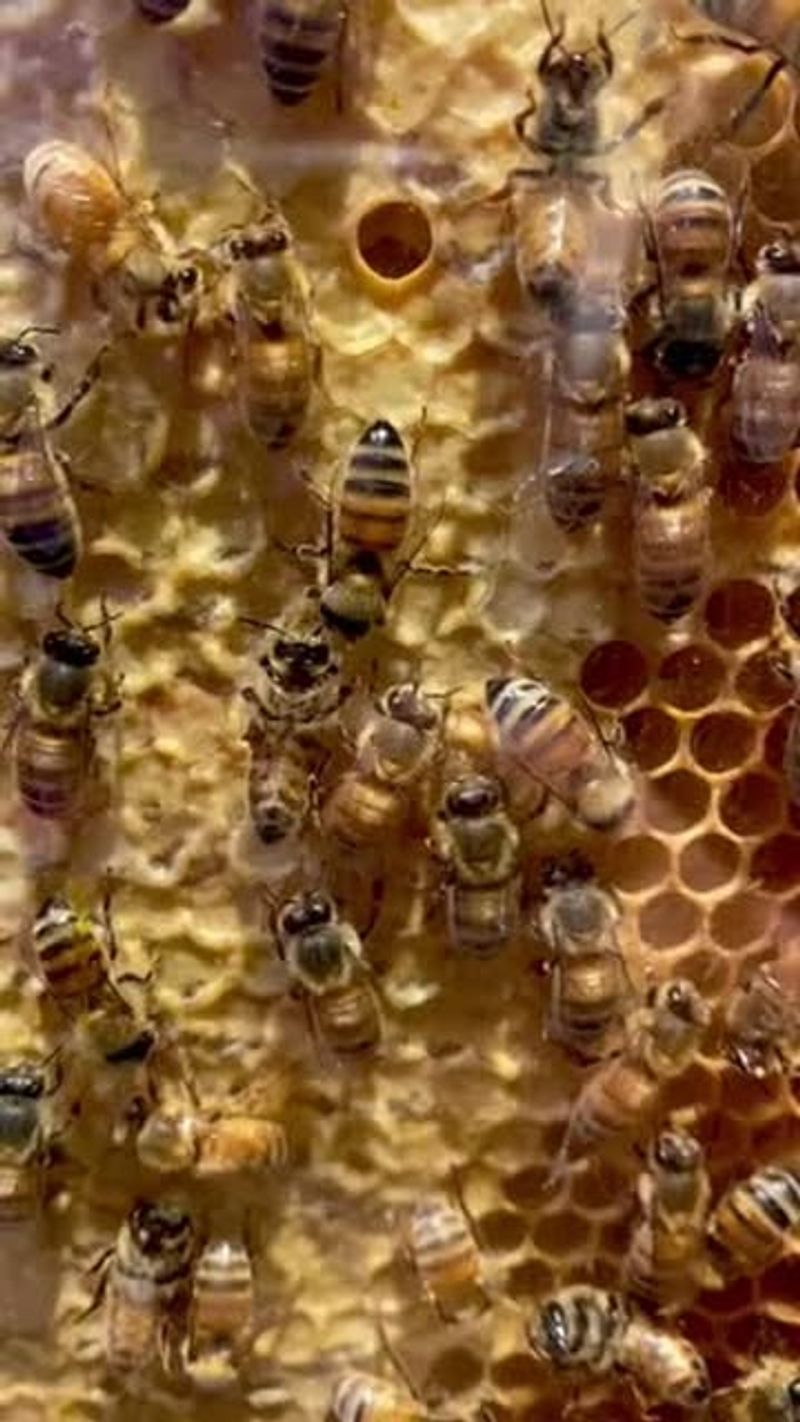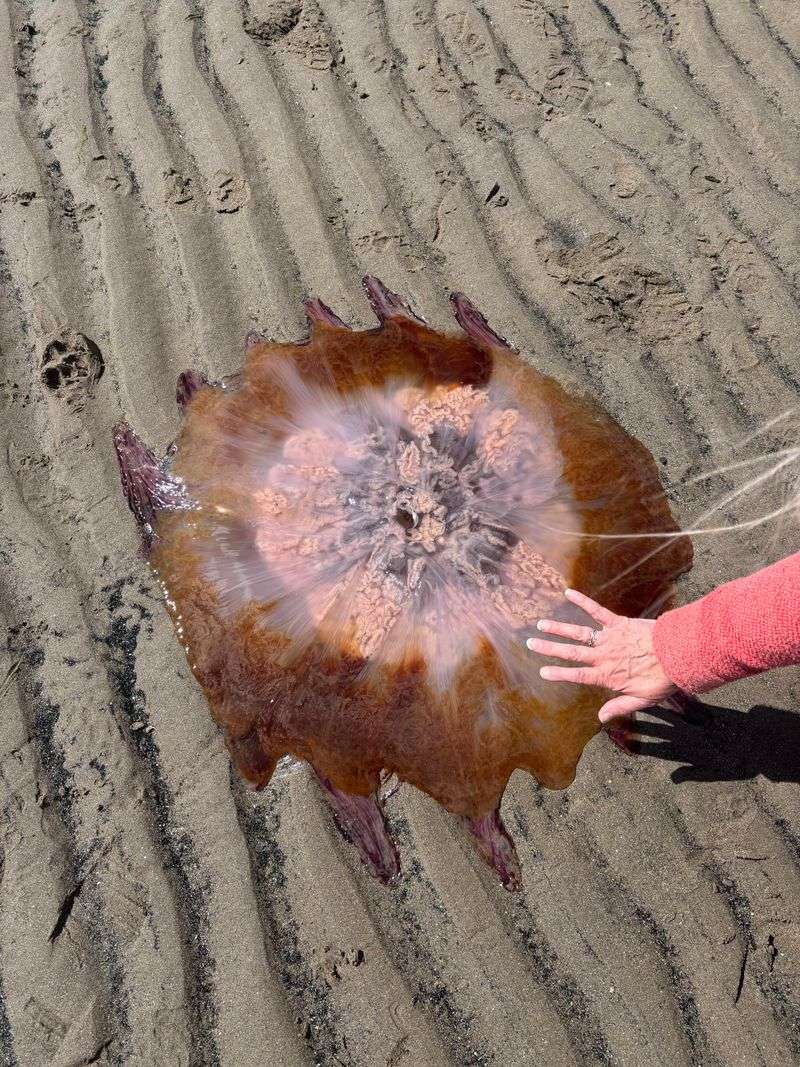I used to feel pretty confident wandering around Rhode Island trails until I learned how many critters pack a punch here. Once I figured out who’s harmless and who’s not, being outdoors started to feel a lot calmer.
It’s actually kind of empowering to know what might be lurking under a log or leaf pile. Let’s walk through the creatures everyone should recognize before stepping outside again.
1. Northern Black Widow Spider
With its glossy black body and signature red hourglass, this spider prefers dark, undisturbed spaces like woodpiles and sheds throughout Rhode Island. Bites cause severe muscle pain and cramping that requires medical attention.
Check gloves and shoes before wearing them if they’ve been stored outside. Most encounters happen when people accidentally disturb their hiding spots. Females are the ones with venom strong enough to harm humans.
Keep outdoor storage areas organized and clutter-free to discourage these spiders from settling in.
2. Timber Rattlesnake
Rhode Island’s only venomous snake lives in rocky, wooded areas and is actually endangered in the state. These snakes have distinctive rattles that warn you before striking, giving you time to back away slowly.
Their brown and tan patterns help them blend perfectly with forest floors. Bites are rare because they avoid people whenever possible.
Never attempt to handle or corner one if you spot it during a hike. Give it space, and it will move along without trouble. Report sightings to wildlife officials to help conservation efforts.
3. Brown Recluse Spider
Though uncommon in Rhode Island, these spiders occasionally arrive in shipments from other states. A violin-shaped mark on their back helps identify them, along with six eyes instead of the usual eight.
Their bites can cause serious tissue damage over several days. They hide in closets, attics, and cardboard boxes during daylight hours.
Shake out clothing that’s been stored for a while before wearing it. If you suspect a bite, capture the spider safely for identification and seek medical help immediately.
4. Bald-Faced Hornet
Actually a type of wasp, these aggressive insects build massive gray paper nests in Rhode Island trees and under building eaves. Their white face markings make them easy to identify from a safe distance.
They aggressively defend their nests and can sting multiple times. Their venom causes intense pain and swelling.
Never approach or disturb their nests, which can house hundreds of workers. Professional removal is the safest option if one appears near your home or frequently used areas.
5. Yellow Jacket Wasp
Summer picnics in Rhode Island often attract these bold black-and-yellow wasps searching for sweet drinks and protein. Unlike bees, they can sting repeatedly without losing their stinger.
Their underground nests sometimes get disturbed by lawnmowers or foot traffic, triggering defensive swarms. Stings cause sharp pain and can trigger allergic reactions in sensitive individuals.
Keep food covered outdoors and avoid swatting at them, which makes them more aggressive. Walk calmly away if you encounter a group acting territorial around their nest.
6. Striped Bark Scorpion
Extremely rare in Rhode Island, these scorpions occasionally appear after hitching rides in vehicles or shipments from southern states. Two dark stripes run down their tan backs, and their tails curve over their bodies.
Stings feel like bee stings but can cause numbness and tingling. They hide under rocks, logs, and inside shoes left outside overnight.
Always shake out camping gear and footwear before use. While encounters are unlikely in Rhode Island, staying aware helps you react properly if you spot one.
7. Saddleback Caterpillar
This striking caterpillar sports a brown saddle mark on its green body and venomous spines that cause burning pain on contact. Found on Rhode Island shrubs and trees during summer months, it looks deceivingly touchable.
The venom from its hollow spines triggers intense stinging, redness, and sometimes nausea. Children are especially tempted to touch these colorful insects.
Teach kids to observe caterpillars without touching them. Remove with a stick if you find one on frequently used plants near your home or play areas.
8. Io Moth Caterpillar
Covered in clusters of venomous spines, this bright green caterpillar munches on Rhode Island trees and shrubs from spring through fall. The spines inject venom that causes welts and itching lasting for hours.
Despite their fuzzy, harmless appearance, touching them results in immediate burning pain. They’re often found in groups on oak, willow, and maple trees.
Wear gloves when gardening or handling branches during caterpillar season. Apply ice and antihistamine cream if you accidentally brush against one while working outdoors in Rhode Island.
9. Puss Caterpillar
Looking like a tiny hairpiece, this deceptively cute caterpillar hides venomous spines beneath its fluffy exterior. Though more common in southern states, climate changes have brought occasional sightings to Rhode Island.
Contact causes immediate, excruciating pain that radiates throughout the affected limb. The pain can last for days without proper treatment.
Its adorable appearance makes it especially dangerous to curious children. If you spot one in Rhode Island, report it to local extension offices and keep everyone at a safe distance.
10. Honey Bee
Rhode Island’s hardworking pollinators rarely sting unless they feel threatened or accidentally trapped against skin. Their barbed stingers get stuck in flesh, and they can only sting once.
Most people experience temporary pain and swelling, but some have severe allergic reactions requiring immediate medical help. Bees are gentle around gardens and flowers when left undisturbed.
Remain calm if one lands on you, and it will fly away shortly. Remove stingers quickly by scraping sideways with a credit card rather than pinching, which releases more venom.
11. Lion’s Mane Jellyfish
Rhode Island’s coastal waters occasionally host these massive jellyfish with flowing tentacles that can stretch over 100 feet long. Their stinging cells remain active even after the jellyfish washes ashore and appears inactive.
Tentacle contact causes burning pain, red welts, and muscle cramps. Children playing on beaches sometimes encounter stranded specimens without realizing the danger.
Never touch jellyfish on Rhode Island beaches, even if they look lifeless. Rinse stings with seawater, not freshwater, and remove tentacles carefully with tweezers while avoiding further contact.


